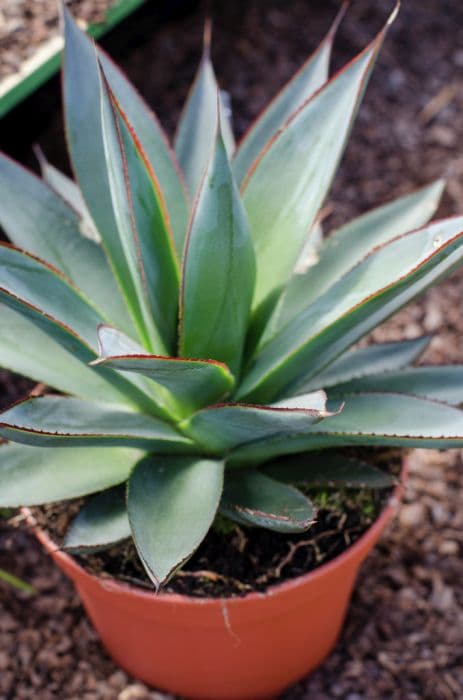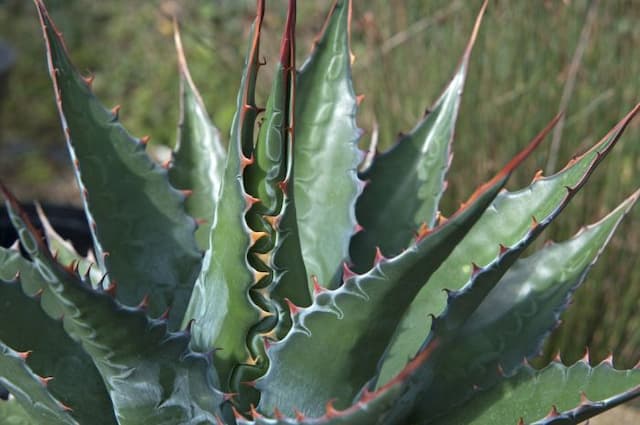Chinese Squill Scilla scilloides

ABOUT
Scilla scilloides, also commonly known as the Chinese squill, is a perennial bulbous plant noted for its attractive floral display. In appearance, it displays a rosette of narrow, strap-shaped leaves that may sometimes have a slight bluish or glaucous tinge. The foliage is quite grass-like, providing a soft texture in the garden setting. The blooms of Chinese squill are particularly striking; they form clusters of small, star-shaped flowers. Each individual flower is typically vibrant pink to magenta in hue, with six pointed petals radiating outward from the center. These delicate flowers are arranged in loose, conical clusters atop erect, leafless flower stalks that emerge from the bulbs each year. The overall impression of the Chinese squill when in bloom is of a whimsical, airy display of nodding flowers that add a splash of color to the landscape. The plant has a delicate and elegant presence, with the flowers providing a stark contrast to the green of the leaves below. After flowering, it produces small, globular seed capsules, completing its life cycle before the foliage dies back to the bulb underground, where it rests until the next growing season.
About this plant
 Names
NamesFamily
Asparagaceae
Synonyms
Chinese Squill, Early Scilla, Late Scilla, Pink Squill, Squill
Common names
Scilla autumnalis, Scilla japonica, Phalangium autumnale, Ornithogalum autumnale, Stellaris scilloides.
 Toxicity
ToxicityTo humans
The plant commonly known as Chinese squill is not widely recognized for its toxicity to humans, and there is limited information available on its potential effects when ingested. However, as with many plants, it is generally advisable to avoid eating parts of ornamental plants due to the potential for unknown toxic compounds. Without specific toxicological data, it is challenging to describe the symptoms of poisoning from Chinese squill. If ingestion occurs, it is prudent to seek medical attention or contact a poison control center for guidance.
To pets
The plant known as Chinese squill may not be widely cited for its toxicity to pets, such as dogs and cats, and there is a lack of specific information regarding its potential harmful effects. Many plants in the Scilla genus contain compounds that can be toxic, so it is plausible that Chinese squill could pose some risk if ingested by pets. Without detailed toxicological data for this particular plant, the symptoms of poisoning are not well-defined. If a pet ingests Chinese squill, it is advisable to contact a veterinarian or an animal poison control service promptly for advice on how to proceed.
 Characteristics
CharacteristicsLife cycle
Perennials
Foliage type
Deciduous
Color of leaves
Green
Flower color
Pink
Height
0.5 feet (15 cm)
Spread
0.5 feet (15 cm)
Plant type
Bulb
Hardiness zones
6
Native area
Asia
Benefits
 General Benefits
General Benefits- Ecosystem support: Scilla scilloides, commonly known as Japanese Squill, provides nectar and pollen for bees and other pollinating insects, supporting local ecosystems.
- Aesthetic appeal: With its attractive purple or pink flowers, Japanese Squill adds beauty to gardens and landscapes during its blooming season.
- Erosion control: As a bulbous plant, Japanese Squill can help stabilize soil and prevent erosion with its root system.
- Low maintenance: Once established, Japanese Squill requires minimal care, which can be appealing for gardeners looking for low-maintenance plants.
- Early spring bloom: Blooming early in the spring, Japanese Squill can provide color to gardens when most other plants are not yet in flower.
- Biodiversity: By planting Japanese Squill, gardeners can contribute to biodiversity, creating habitats and food sources for a variety of species.
 Medical Properties
Medical Properties- Anti-inflammatory: Scilla scilloides may possess anti-inflammatory effects that can help reduce inflammation in the body.
- Diuretic: It has been suggested to have diuretic properties which can aid in increasing the passing of urine.
- Expectorant: The plant is traditionally believed to have expectorant properties, helping to clear mucus from the respiratory tract.
- Antitumor: Some studies suggest that Scilla scilloides contains compounds that may exhibit antitumor activity.
- Antibacterial: It may contain antibacterial agents that can help in fighting bacterial infections.
 Air-purifying Qualities
Air-purifying QualitiesThis plant is not specifically known for air purifying qualities.
 Other Uses
Other Uses- Ecological Indicator: Scilla scilloides can be used to indicate the health of an ecosystem as it thrives in undisturbed habitats with rich, moist soils.
- Dye Source: The plant’s pigments may be used to produce a natural dye for textiles.
- Educational Tool: Its distinct flowering and growth patterns can be studied in botany education to teach about bulbous plant life cycles.
- Garden Design: Used in ornamental gardening, it adds a splash of color with its pink to purple flowers, especially in rock gardens and woodland settings.
- Bee Forage: The flowers of Scilla scilloides provide nectar and pollen for bees and other pollinators in late summer to early autumn.
- Photography Subject: Its vibrant flowers make it an excellent subject for nature photography, promoting biodiversity awareness.
- Cultural Symbol: In some regions, the plant may carry cultural or symbolic meaning during festivals or in folklore.
- Soil Improvement: The plant's decaying leaves can enrich soil with organic matter, improving soil fertility over time.
- Companion Planting: It could potentially be used for companion planting to attract beneficial insects that would aid in the growth of other plants or crops.
- Floral Arrangements: When in bloom, the striking flowers can be cut and used in floral arrangements.
Interesting Facts
 Feng Shui
Feng ShuiThe Chinese Squill is not used in Feng Shui practice.
 Zodiac Sign Compitability
Zodiac Sign CompitabilityThe Chinese Squill is not used in astrology practice.
 Plant Symbolism
Plant Symbolism- Perseverance: Scilla scilloides, commonly known as Chinese Squill, often blooms persistently even in adverse conditions, symbolizing the human trait of perseverance and resilience.
- Hope: The bright and lively flowers of the Chinese Squill emerge in late summer to early fall, providing a sense of hope and renewal as they herald the end of one season and the beginning of another.
- Purity: The delicate and pure blue or purple flowers of the Chinese Squill are often associated with purity and innocence, akin to many other flowers with similar hues.
- Adaptability: As a plant that can thrive in various conditions, including rocky terrains, the Chinese Squill represents adaptability and the ability to thrive in diverse environments.
 Water
WaterThe Chinese Squill needs to be watered when the top inch of soil feels dry, typically every 1-2 weeks, depending on environmental conditions such as heat and humidity. Use enough water to moisten the soil thoroughly until it begins to drain through the holes at the bottom of the pot, which may be approximately 16-32 onzes for a standard houseplant pot size. Overwatering should be avoided as it can lead to root rot, so ensure the pot has good drainage.
 Light
LightThe Chinese Squill thrives in bright, indirect light but can tolerate some direct sun, especially if it's the gentler morning light. It's best placed in a location where it can receive plenty of light without the harsh midday sun, such as near an east-facing window where it gets morning light or a south/west-facing window with some shade.
 Temperature
TemperatureChinese Squill prefers temperatures between 60 and 75 degrees Fahrenheit for optimal growth. It can survive minimum temperatures down to 50 degrees Fahrenheit but should be protected from frost. Avoid placing it in areas with drastic temperature changes or cold drafts.
 Pruning
PruningThe Chinese Squill does not require extensive pruning, but removing spent flower stalks after blooming encourages healthy growth and appearance. Prune the plant by gently cutting away the dead or yellowing leaves at the base to keep it tidy. The best time for pruning is right after the flowering period as the plant begins to enter its dormancy phase.
 Cleaning
CleaningAs needed
 Soil
SoilChinese Squill (Scilla scilloides) thrives best in a soil mix that is rich, loamy, and well-draining. A mixture of two parts loam, one part peat, and one part sharp sand or perlite is ideal. The soil pH should be slightly acidic to neutral, ideally between 5.5 and 7.0.
 Repotting
RepottingChinese Squill typically needs repotting every 2-3 years to refresh the soil and accommodate bulb growth. It's best to repot after the flowering period when the plant is in dormancy.
 Humidity & Misting
Humidity & MistingChinese Squill prefers moderate to high humidity levels. A range of 40-70% is ideal for this plant to thrive.
 Suitable locations
Suitable locationsIndoor
Place Chinese Squill in bright, indirect light indoors.
Outdoor
Plant Chinese Squill in partial shade outdoors.
Hardiness zone
4-9 USDA
 Life cycle
Life cycleScilla scilloides, also known as Chinese squill, begins its life cycle as a bulb, which remains dormant underground during winter. In spring, the bulb germinates to produce thin, strap-like leaves and a stem that carries the flower cluster. The flowering stage occurs in late summer to early autumn, where small, star-shaped flowers bloom in shades of pink or lilac. After pollination, typically by bees and other insects, the flowers develop into capsule-like fruits, which release seeds when they mature. These seeds then disperse, potentially germinating to produce new bulbs, continuing the life cycle. During the colder months, the above-ground foliage dies back, and the plant re-enters a period of dormancy until the next growing season.
 Propogation
PropogationPropogation time
Spring-summer
The most popular method of propagation for the Scilla scilloides, commonly known as the Chinese Squill, is through bulb offsets. Chinese Squill bulbs naturally produce small offsets or bulblets that can be gently separated from the parent bulb once they have formed a sufficient size, which usually happens in the late summer or early fall after the foliage has died back. These offsets can then be planted immediately about 2 to 3 inches deep (5 to 7.5 cm) and spaced 3 to 4 inches apart (7.5 to 10 cm) in well-drained soil with adequate exposure to sunlight. It is crucial to handle the bulblets carefully to avoid damage and to water them lightly after planting to encourage root development. This method allows for an efficient and effective way to increase the number of Chinese Squills in the garden over time.









